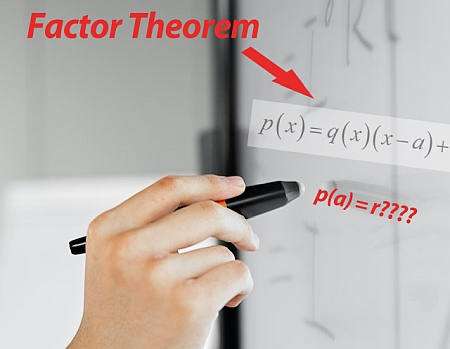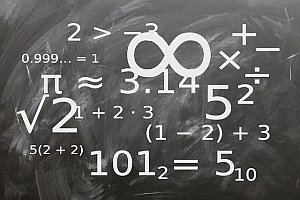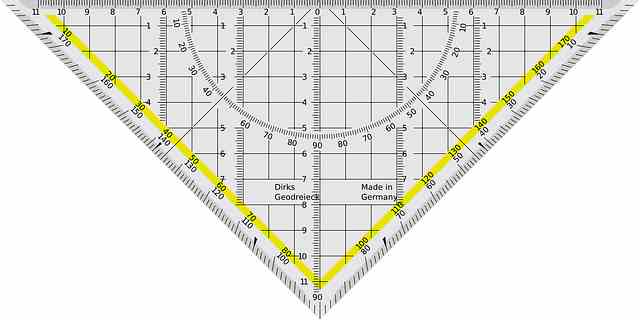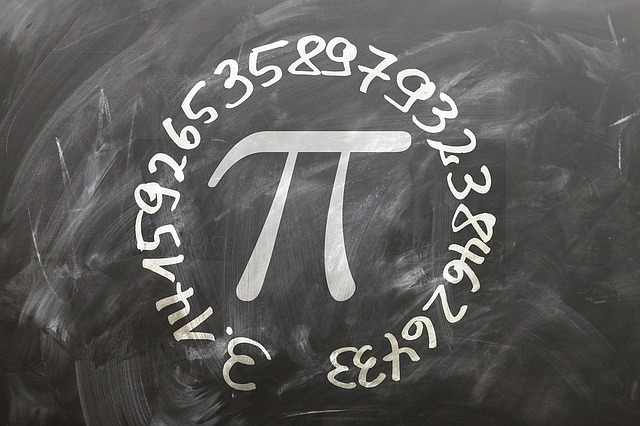Factor Theorem
Instructions: Use this calculator to use Factor Theorem to assess whether a polynomial p(x) and a numeric expression you provide, which we call a, is that that (x - a) is a factor of p(x). Please type the required information in the form below.
Factor Theorem
This calculator will help you to use the Factor Theorem, showing all the steps. All you need to do is to provide a valid polynomial, like for example x^3 - 3x + 4, and a number or numeric expression, like 1/3. If we call the polynomial p(x), and the value a, we use the Factor Theorem to assess whether or not (x - a) is a factor of p(x) or not.
Once you provide a valid polynomial and a value are provide, what is left for you to do is just to click on "Calculate" in order to get all the steps shown.
Observe that x - a being a factor of p(x) is the same as having that x - a divides p(x) exactly.

What is the Factor Theorem?
The idea of factoring a polynomial is simple: we want to know whether or not a polynomial can be written as the multiplication of smaller polynomials. Like for example, if \(p(x)\) is a polynomial, and we are able to write
\[ p(x) = q(x)(x-a)\]for some polynomial \(q(x)\) then we can say that \(x - a\) is a factor of \(p(x)\). The Factor Theorem states that for a \(x - a\) to be a factor of \(p(x)\), then we need to have that \(p(a) = 0\), and conversely, if \(p(a) = 0\), then \(x - a\) is a factor of \(p(x)\).
So then, the Factor Theorem tells us this crucial and a tight association between roots of the polynomials and factors of the polynomial, to the point that \(a\) is a root of the polynomial if and only if \(x - a\) is a factor of \(p(x)\). Hence, to find the roots of a polynomial, we need to find its factors.
How to use the Factor theorem to factor polynomials
There are quite a few different approaches, but the most common are:
- Step 1: Start with a polynomial p(x). Make sure it is simplified as much as possible.
- Step 2: If the degree of p(x) is 2 or less, then there are direct formulas to get the roots. For degree 2, if the roots are r1 and r2, the polynomial is factored as p(x) = a(x-r1)(x-r2), where a is the leading term
- Step 3: For degree 3 or higher, try to guess a root, or better use first the rational root theorem to find as many rational roots as possible
- Step 4: If the previous step did not yield any roots, then stop. There is nothing you can do with basic methods, and likely you need a numerical approximation
- Step 5: If you found any simple roots from the previous steps, then by the Factor Theorem the terms x - r (where r is a root) must be factor. So we divide p(x) by all the corresponding factors. This will lead to a polynomial that has a degree that has been reduced as much as the number of roots found in previous steps. Call the resulting polynomial p(x)
- Step 6: Apply all the steps again to the new polynomial p(x), until the iteration stops.
Actually, there are exact formulas for the roots of polynomials of degree 3 and 4, but there are not really user friendly, so they are typically not covered in a basic Algebra course.
How to relate the Factor Theorem and Reminder Theorem
The factor theorem is tightly related to the remainder theorem. This is because from the Euclidean decomposition obtained when dividing polynomials \(p(x)\) and \(s(x)\), we get that there are polynomials \(q(x)\) and \(r(x)\) such that
\[p(x) = s(x) q(x) + r(x) \]with \(deg(r(x)) < deg(s(x))\). So then, in particular, when \(s(x) = x-a\), which has degree 1, we have
\[p(x) = s(x) (x-a) + r(x) \]and in this case, \(r(x)\) must have degree 0 (because it must be smaller than the degree of s, which is 1), so then \(r(x) = r\) is a constant. Then
\[p(x) = s(x) (x-a) + r \]and plugging \(x = a\) in the above equation leads to:
\[p(a) = s(a) (a-a) + r \Rightarrow p(a) = r\]So then remainder theorem imples that if \(a\) is a root, then \(p(a) = 0\) and so the remainder is also \(r = 0\).
Tips for success
The factor theorem is a good too to find roots of a polynomial, and tell us that roots can directly be turned into factors. This will likely lead for you to evaluate expressions, for which sometimes can be more convenient when using the process of synthetic substitution, as opposed to simply plugging in a making the calculations.
Avoid mistakes like trying to think of a "formula" for finding factors. Finding factors is essentially the same as finding roots, which involves being able to effectively evaluate polynomials at given values.

Example: Factor Theorem
Is \(x - 1\) a factor of \(p(x) = 3x^3 - x^2 + 2x - 1\)
Solution: The following polynomial has been provided: \(\displaystyle p(x) = 3x^3-x^2+2x-1\), and we need to find out for the given point \(\displaystyle x = 1\) whether or not \(\displaystyle x - 1\) is factor of \(p(x)\).
In order to do so, we will use synthetic substitution to assess whether or not \(\displaystyle p(1) = 0\).
In order to conduct the synthetic substitution, we need to do a synthetic division of : \(\displaystyle p(x) = 3x^3-x^2+2x-1\), and the divisor \(\displaystyle s = x-1\), and find the remainder.
Observe that the degree of the dividend is \(\displaystyle deg(p) = 3\), whereas the degree of the divisor is \(\displaystyle deg(s)) = 1\).
Step 1: Since the divisor has a degree 1, we can use the Synthetic Division method. By solving \(\displaystyle s(x) = x-1 = 0\) we find directly that the number to put in the division box is: \(\displaystyle 1\).
\[\begin{array}{c|ccc} 1 & 3 & -1 & 2 & -1 \\[0.6em] & & & & & \\[0.6em] \hline & & & & & \end{array}\]Step 2: Now we pass directly the leading term \(3\) to the result row:
\[\begin{array}{c|ccc} 1 & 3 & -1 & 2 & -1 \\[0.6em] & & & & & \\[0.6em] \hline &3&&& \end{array}\]Step 3: Multiplying the term in the division box by the result in column 1, we get: \(1 \cdot \left(3\right) = 3\) and this result is inserted in the result row, column 1.
\[\begin{array}{c|ccc}1 & 3 & -1 & 2 & -1\\[0.6em]& 0 & 3 & \\[0.6em]\hline&3&&&\end{array}\]Step 4: Now adding the values in column 2, we get: \( -1+3 = 2\) and this result is inserted in the result row, column 2.
\[\begin{array}{c|ccc}1 & 3 & -1 & 2 & -1\\[0.6em]& 0 & 3 & \\[0.6em]\hline& 3 & 2 & \end{array}\]Step 5: Multiplying the term in the division box by the result in column 2, we get: \(1 \cdot \left(2\right) = 2\) and this result is inserted in the result row, column 2.
\[\begin{array}{c|ccc}1 & 3 & -1 & 2 & -1\\[0.6em]& 0 & 3 & 2\\[0.6em]\hline& 3 & 2 & \end{array}\]Step 6: Now adding the values in column 3, we get: \( 2+2 = 4\) and this result is inserted in the result row, column 3.
\[\begin{array}{c|ccc}1 & 3 & -1 & 2 & -1\\[0.6em]& 0 & 3 & 2\\[0.6em]\hline& 3 & 2 & 4\end{array}\]Step 7: Multiplying the term in the division box by the result in column 3, we get: \(1 \cdot \left(4\right) = 4\) and this result is inserted in the result row, column 3.
\[\begin{array}{c|ccc}1 & 3 & -1 & 2 & -1\\[0.6em]& 0 & 3 & 2 & 4\\[0.6em]\hline& 3 & 2 & 4\end{array}\]Step 8: Now adding the values in column 4, we get: \( -1+4 = 3\) and this result is inserted in the result row, column 4.
\[\begin{array}{c|ccc}1 & 3 & -1 & 2 & -1\\[0.6em]& 0 & 3 & 2 & 4\\[0.6em]\hline& 3 & 2 & 4 & 3\end{array}\]which concludes this calculation, since we have arrived to the result in the final column, which contains the remainder.
Conclusion: Therefore, we conclude that for the given dividend \(\displaystyle p(x) = 3x^3-x^2+2x-1\) and divisor \(\displaystyle s(x) = x-1\), we get that the remainder is \(\displaystyle r(x) = 3\), so then we conclude that \(\displaystyle p\left(1\right) = 3 \ne 0\).
Therefore, we conclude that \(\displaystyle x - 1\) is NOT factor of \(p(x)\).
Example: More Factor theorem examples
For the polynomial : \(p(x) = 3x^3 + x^3 - 15x + 4\), what is \(p(1/3)\), what does imply in terms of x - 1/3 being a factor of p(x)?
Solution: In this case we have: \(\displaystyle p(x) = 3x^3+x^3-15x+4\), and the given point is \(\displaystyle x = \frac{1}{3}\) . We need to find out whether \(\displaystyle x - \frac{1}{3}\) is factor of \(p(x)\) or not.
As in the previous example, synthetic substitution will be used to assess if\(\displaystyle p(\frac{1}{3}) = 0\).
Initial Step: In this case, we first need to simplify the dividend \(\displaystyle P(x) = 3x^3+x^3-15x+4\), and in order to do so, we conduct the following simplification steps:
Now, we proceed to do a synthetic division of : \(\displaystyle p(x) = 4x^3-15x+4\), with the divisor \(\displaystyle s = x-\frac{1}{3}\), and we need to find the remainder.
Step 1: Since the divisor has a degree 1, we can use the Synthetic Division method. By solving \(\displaystyle s(x) = x-\frac{1}{3} = 0\) we find directly that the number to put in the division box is: \(\displaystyle \frac{1}{3}\).
\[\begin{array}{c|ccc} \frac{1}{3} & 4 & 0 & -15 & 4 \\[0.6em] & & & & & \\[0.6em] \hline & & & & & \end{array}\]Step 2: Now we pass directly the leading term \(4\) to the result row:
\[\begin{array}{c|ccc} \frac{1}{3} & 4 & 0 & -15 & 4 \\[0.6em] & & & & & \\[0.6em] \hline &4&&& \end{array}\]Step 3: Multiplying the term in the division box by the result in column 1, we find: \(\frac{1}{3} \cdot \left(4\right) = \frac{4}{3}\) and this result is inserted in the result row, column 1.
\[\begin{array}{c|ccc}\frac{1}{3} & 4 & 0 & -15 & 4\\[0.6em]& 0 & \frac{4}{3} & \\[0.6em]\hline&4&&&\end{array}\]Step 4: Now adding the values in column 2, we find: \( 0+\frac{4}{3} = \frac{4}{3}\) and this result is inserted in the result row, column 2.
\[\begin{array}{c|ccc}\frac{1}{3} & 4 & 0 & -15 & 4\\[0.6em]& 0 & \frac{4}{3} & \\[0.6em]\hline& 4 & \frac{4}{3} & \end{array}\]Step 5: Multiplying the term in the division box by the result in column 2, we find: \(\frac{1}{3} \cdot \left(\frac{4}{3}\right) = \frac{4}{9}\) and this result is inserted in the result row, column 2.
\[\begin{array}{c|ccc}\frac{1}{3} & 4 & 0 & -15 & 4\\[0.6em]& 0 & \frac{4}{3} & \frac{4}{9}\\[0.6em]\hline& 4 & \frac{4}{3} & \end{array}\]Step 6: Now adding the values in column 3, we find: \( -15+\frac{4}{9} = -\frac{131}{9}\) and this result is inserted in the result row, column 3.
\[\begin{array}{c|ccc}\frac{1}{3} & 4 & 0 & -15 & 4\\[0.6em]& 0 & \frac{4}{3} & \frac{4}{9}\\[0.6em]\hline& 4 & \frac{4}{3} & -\frac{131}{9}\end{array}\]Step 7: Multiplying the term in the division box by the result in column 3, we find: \(\frac{1}{3} \cdot \left(-\frac{131}{9}\right) = -\frac{131}{27}\) and this result is inserted in the result row, column 3.
\[\begin{array}{c|ccc}\frac{1}{3} & 4 & 0 & -15 & 4\\[0.6em]& 0 & \frac{4}{3} & \frac{4}{9} & -\frac{131}{27}\\[0.6em]\hline& 4 & \frac{4}{3} & -\frac{131}{9}\end{array}\]Step 8: Now adding the values in column 4, we find: \( 4-\frac{131}{27} = -\frac{23}{27}\) and this result is inserted in the result row, column 4.
\[\begin{array}{c|ccc}\frac{1}{3} & 4 & 0 & -15 & 4\\[0.6em]& 0 & \frac{4}{3} & \frac{4}{9} & -\frac{131}{27}\\[0.6em]\hline& 4 & \frac{4}{3} & -\frac{131}{9} & -\frac{23}{27}\end{array}\]which concludes this calculation, since we have arrived to the result in the final column, which contains the remainder.
Conclusion: Therefore, after simplifying, we find that when dividing \(\displaystyle p(x) = 4x^3-15x+4\) and the divisor \(\displaystyle s(x) = x-\frac{1}{3}\), we get that the remainder is \(\displaystyle r(x) = -\frac{23}{27}\), so then we conclude that \(\displaystyle p\left(\frac{1}{3}\right) = -\frac{23}{27} \ne 0\).
Therefore, we conclude that \(\displaystyle x - \frac{1}{3}\) is NOT factor of \(p(x)\).
Example: More about the factor theorem
Is \(x - 2\) a factor of \(p(x) = 2x^4 - x^3 + x - 2\)
Solution: For this example we have: \(\displaystyle p(x) = 2x^4-x^3+x-2\), so we need to find whether \(\displaystyle x = 2\) is a root of the polynomial or not, in order to assess whether \(\displaystyle x - 2\) is factor of \(p(x)\) or not.
In order to do so, we will use synthetic substitution to assess whether or not \(\displaystyle p(2) = 0\).
The synthetic division of will be carried out for : \(\displaystyle p(x) = 2x^4-x^3+x-2\), and \(\displaystyle s = x-2\), and we need to find the remainder of the division.
Step 1: Since the divisor has a degree 1, we can use the Synthetic Division method. By solving \(\displaystyle s(x) = x-2 = 0\) we find directly that the number to put in the division box is: \(\displaystyle 2\).
\[\begin{array}{c|cccc} 2 & 2 & -1 & 0 & 1 & -2 \\[0.6em] & & & & & & \\[0.6em] \hline & & & & & & \end{array}\]Step 2: Now we pass directly the leading term \(2\) to the result row:
\[\begin{array}{c|cccc} 2 & 2 & -1 & 0 & 1 & -2 \\[0.6em] & & & & & & \\[0.6em] \hline &2&&&& \end{array}\]Step 3: Multiplying the term in the division box by the result in column 1, we find: \(2 \cdot \left(2\right) = 4\) and this result is inserted in the result row, column 1.
\[\begin{array}{c|cccc}2 & 2 & -1 & 0 & 1 & -2\\[0.6em]& 0 & 4 & & \\[0.6em]\hline&2&&&&\end{array}\]Step 4: Now adding the values in column 2, we find: \( -1+4 = 3\) and this result is inserted in the result row, column 2.
\[\begin{array}{c|cccc}2 & 2 & -1 & 0 & 1 & -2\\[0.6em]& 0 & 4 & & \\[0.6em]\hline& 2 & 3 & & \end{array}\]Step 5: Multiplying the term in the division box by the result in column 2, we find: \(2 \cdot \left(3\right) = 6\) and this result is inserted in the result row, column 2.
\[\begin{array}{c|cccc}2 & 2 & -1 & 0 & 1 & -2\\[0.6em]& 0 & 4 & 6 & \\[0.6em]\hline& 2 & 3 & & \end{array}\]Step 6: Now adding the values in column 3, we find: \( 0+6 = 6\) and this result is inserted in the result row, column 3.
\[\begin{array}{c|cccc}2 & 2 & -1 & 0 & 1 & -2\\[0.6em]& 0 & 4 & 6 & \\[0.6em]\hline& 2 & 3 & 6 & \end{array}\]Step 7: Multiplying the term in the division box by the result in column 3, we find: \(2 \cdot \left(6\right) = 12\) and this result is inserted in the result row, column 3.
\[\begin{array}{c|cccc}2 & 2 & -1 & 0 & 1 & -2\\[0.6em]& 0 & 4 & 6 & 12\\[0.6em]\hline& 2 & 3 & 6 & \end{array}\]Step 8: Now adding the values in column 4, we find: \( 1+12 = 13\) and this result is inserted in the result row, column 4.
\[\begin{array}{c|cccc}2 & 2 & -1 & 0 & 1 & -2\\[0.6em]& 0 & 4 & 6 & 12\\[0.6em]\hline& 2 & 3 & 6 & 13\end{array}\]Step 9: Multiplying the term in the division box by the result in column 4, we find: \(2 \cdot \left(13\right) = 26\) and this result is inserted in the result row, column 4.
\[\begin{array}{c|cccc}2 & 2 & -1 & 0 & 1 & -2\\[0.6em]& 0 & 4 & 6 & 12 & 26\\[0.6em]\hline& 2 & 3 & 6 & 13\end{array}\]Step 10: Now adding the values in column 5, we find: \( -2+26 = 24\) and this result is inserted in the result row, column 5.
\[\begin{array}{c|cccc}2 & 2 & -1 & 0 & 1 & -2\\[0.6em]& 0 & 4 & 6 & 12 & 26\\[0.6em]\hline& 2 & 3 & 6 & 13 & 24\end{array}\]and we stop the division since the remainder has degree 0.
Conclusion: Therefore, we conclude that for the given dividend \(\displaystyle p(x) = 2x^4-x^3+x-2\) and divisor \(\displaystyle s(x) = x-2\), we get that the remainder is \(\displaystyle r(x) = 24\), so then we conclude that \(\displaystyle p\left(2\right) = 24 \ne 0\).
Therefore, we conclude that \(\displaystyle x - 2\) is NOT factor of \(p(x)\).
More Polynomial Calculators
The importance of polynomials cannot be overstated, as they are one of the most important objects in Algebra. Polynomial calculations are really important in Math and in many applications in beyond math.
Polynomials bring up the main problem of solving polynomial equations, which are among the most important ones in Algebra, though there are not necessarily easy to solve, and indeed, there is not really a formula to get those solutions, for higher degrees.
Finding roots involves using the rational zero theorem to find simple solutions, using polynomial division to reduce the equation to one of lower degree by using long division or synthetic division, and to rinse and repeat until we find the all the roots. Though these is not always possible considering that there could be roots that are not rational and also complex roots.





